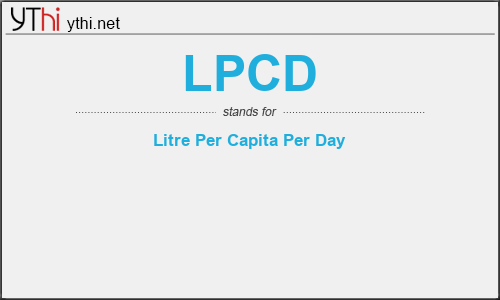What does LPCD mean? What is the full form of LPCD?
The full form of LPCD is Litre Per Capita Per Day.
World Water Day is a good time to ask questions like this one. It’s a question that people who don’t live in places with water shortages rarely ask themselves, but it’s a vital question in the day-to-day of people in other parts of the world who, for a variety of reasons, don’t have a secure water supply.
Before answering the question, we must first take a closer look at the situation, and address other questions that arise during the process.
Although water is the most abundant resource on the planet, just 3% is fresh water, and just 1% of that is available for drinking.
Spain’s National Statistics Institute reported that average household water consumption in Spain was 137 litres per person per day in 2012. That number far exceeds the minimum required per person, according to the World Health Organisation.
It’s clear that water sustainability—the greatest guarantee for its availability—requires responsible consumption and proper management. The following consumption data sheds light on our daily relationship with water:
- A bath: 150-300 litres
- Shower: 50-100 litres
- Flushing a toilet: 10 litres
- Washing dishes by hand: 23 litres
- Dishwasher: 20-40 litres.
- Washing machine: 40-80 litres
- Defrosting food under the tap: 25-25 litres
- Leaving the water running for 1.5 minutes while you brush your teeth can use more than 18 litres.
- Washing your car with a hose: 200-500 litres.
As citizens, we should be aware of our individual and collective responsibility with regard to water. In this regard, ECODES, with the support of Ferrovial, has prepared educational material to raise awareness among the beneficiaries of a jointly executed project, the aim being not only to provide infrastructure, but also to help create responsible consumption habits among the population. With this information in mind, now we can answer the question at the beginning of this post.
LPCD
means
Litre Per Capita Per Day![]()
Translate Litre Per Capita Per Day to other language.


Leave a Reply
You must be logged in to post a comment.